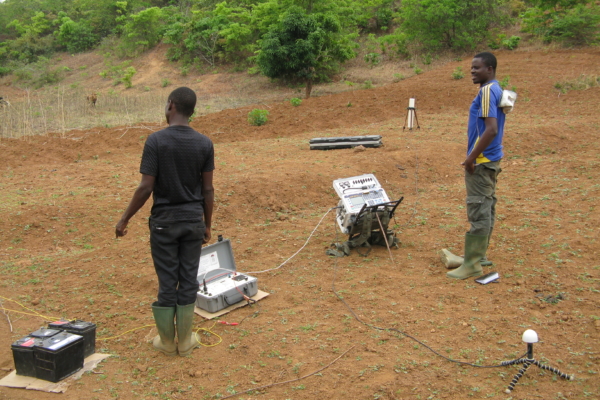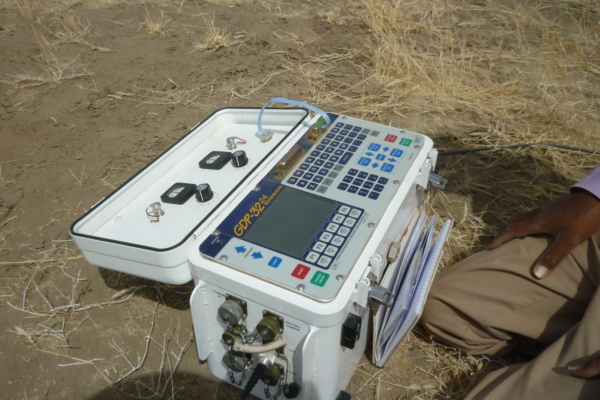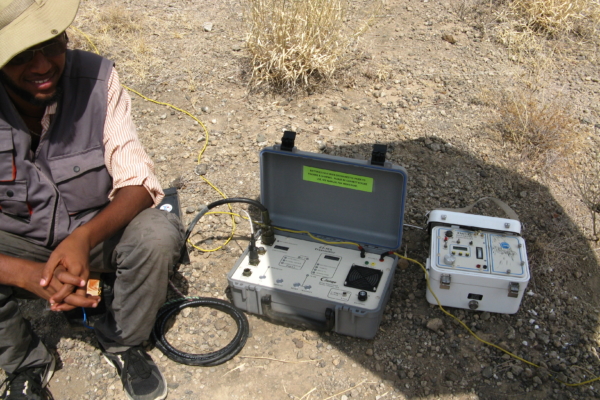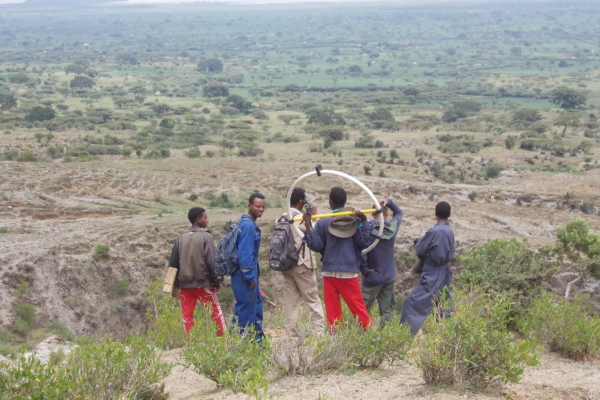- Time-Domain ElectroMagnetics (TDEM) method is based on EM induction underground generated by the turn-off of an artificial magnetic dipole source laying at the earth’s surface. The magnetic field variation induces eddy currents in the ground,diffusively propagating downward, with a velocity dependent on the subsoil resistivity. The secondary field measured at surface decays according to the resistivity of the passed through medium.
-
The magnetic dipole is created by means of a transmitter loop, even several hundreds meters wide. The loop is energised by currents usually ranging between 10 and 30 A. The secondary field is measured by a magnetic coil or a receiver loop, most of the times put at the centre of the Tx loop, but several different configurations are used.
-
Depending upon the acquisition settings and survey logisitics, it’s possible to acquire TDEM data at several locations a day, rapidly producing 1D and 2D resistivity models useful for preliminary assessment of shallow structures.
-
TDEM technique provides detailed modelling on shallow resistivity (up to few hundreds meters of depth), and can have many applications in engineering and environmental studies.
-
Furthermore, it is the more widely used tool for correction of “statically shifted” MT data, that occur for example, when small shallow heterogeneities are present at a site. For this reason, TDEM surveys are often carried out in geothermal prospects, where extreme resistivity contrasts are present.
 |
| TDEM data |
 |
| 1D models profiling |
 |
| Pseudo-2D resistivity section |
 |
| Resistivity slices from 1D models |
 |
| MT static shift factor compuertd by means of joint TDEM/MT inversion |






